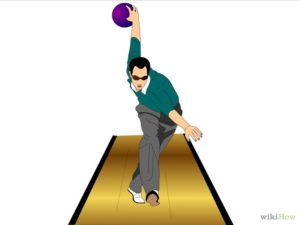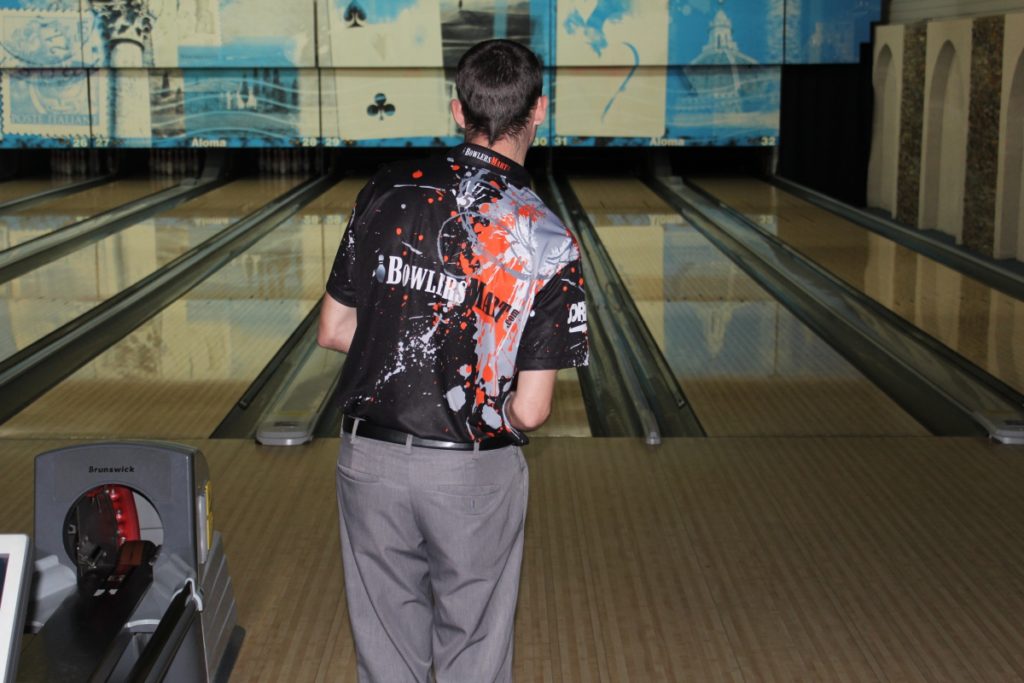Bowling Tips and Techniques
*********************************************************************************************
Posted 23 September 2018
Bowling tips – How to Slow Down Your Bowling Ball Speed
This post presents an advanced bowling technique designed, to better match your bowling ball speed with your bowling rpm (revolutions per minute) or rev rate and ultimately to increase your bowling scoring. As an advanced bowling technique, it is one that you should discuss and work with your coach to perfect and/or incorporate into your practice regiment if you have no formal coach.
I am a speed dominant player, that is I tend to roll the bowling ball fast. This works well on a typical house shot (THS) condition or where the outside is fairly dry and you have a weak ball that will basically ignore the friction in the heads and crush the 1-3 pocket due to the extreme entry angle. However, today’s modern bowling is a game of adjustments and matching up your bowling technique to the bowling lane conditions. These conditions change from house to house. If you are a tournament bowler, then you know all too well and understand the precarious position being locked into one single bowling technique can put you in. I had my taste of this a few years ago when I went to the USBC Open event back when it was held in Reno. I was averaging around 210 at the time and had a couple 300s under my belt so figured I was hot stuff. USBC put out a shot then that called for play around the 9 board but with controlled speed. Due to a combination of the weakness of my equipment and overly fast bowling ball speed (which was my regular speed), I did not have a good matchup of lane condition to bowling ball to bowling ball speed. The predominant of this being lack of ability to adjust bowling ball speed.
This is No!!!

I immediately signed up for a 2-hour bowling lesson right there in the Reno bowling stadium and found out that my issue was lack of ability to effectively adjust speed. I think you get the picture here.
So, if you are in this position you’re probably saying yeah that’s me so what do I do.
There are a couple two or three adjustments you can make to slow down your bowling ball speed:
- Eliminate pulling the bowling ball down from the top on your last step before delivery
- Adjust the bowling ball starting position in your stance
- Adjust your starting position on the bowling lane to be closer to the foul line

Adjustments one and two are linked so I’ll describe them both together. Eliminating pulling the bowling ball down from the top simply means letting gravity control the rate of descent. That is eliminating muscling the ball from the top of the swing thru delivery. This is a tricky adjustment because It can feel unnatural if you are locked into doing it. One quick way to feel the difference between muscling and letting the ball fall naturally is by doing the one-step approach drill. You stand a step and a half away from the foul line, hold the bowling ball around waist high, start the bowling ball delivery motion letting gravity control the rate at which you drop the ball from the waist into your backswing. You take your delivery step or sliding step and then allow the ball weight and gravity to control the bowling ball returning from the backswing thru release.
This does two things;
One it gives you different starting positions to begin to control speed. Say waist high for medium speed, chest high for faster speed or at the thigh for slower speeds.
Two it syncs your ball speed with your bowling ball starting position. That is if you start the bowling ball swing at waist level, the backswing should go back to waist level or slightly higher. If you start the bowling ball delivery at thigh height the backswing should be no higher than waist high and likewise, if you start the backswing above the waist say chest high, then you would expect the backswing to be above the waist but certainly not above the shoulders. Each position should produce a noticeable difference in bowling ball speed on the lane. So, in reality, the two techniques are linked as they incorporate the speed adjustment with bowling ball starting position in your stance and bowling ball weight and gravity control of the bowling ball descent speed thru delivery.

The third technique for adjusting your bowling ball speed is probably more of further refinement, meaning you would expect smaller impacts on speed by performing this adjustment. It is to Move forward or backward on the approach. Perhaps obviously, moving closer to the foul line will cause you to take smaller steps than you normally would if you were standing further away. This will subconsciously cause you to slow down the tempo at which you approach the line for fear of fouling. The slower tempo, i.e. slowing of your feet going to the line will cause you to roll the ball slower. Similarly stepping back on the approach will tend to cause you to take larger steps and move at a quicker pace to get to the foul line, this would subconsciously cause you to roll the bowling ball a bit faster. This is a tricky adjustment for speed control because this technique of moving forward and backward on the approach also controls how short or long the ball gets down the lane, i.e. the bowling ball reaction. That bowling technique and tip is for another day.
As you are practicing, hopefully, you have access to a center that records bowling ball speed. If so be sure to use your plastic ball or one of your weakest balls for the drill. That way as much as possible you are taking the lane condition out of the equation. As you will see in the YouTube video I reference below you will want to develop a 3 mile per hour (mph) bowling ball speed window, mine is about 14.5 to 16.5 mph.
Ok, go ahead and check out this bowling video from the USBC Bowling Academy. If you successfully add this advanced bowling technique to your game you will create greater diversity in your game, be able to play different areas of the bowling lane and ultimately increase your bowling scoring.
Checkout other bowling tips and recommendations on my Pinterest page and be sure to share this post on Pinterest, Twitter, Facebook or other social networks.
*********************************************************************************************
*********************************************************************************************
Posted 25 June 2018
Bowling Tips / Bowling Techniques – Bowling Scoring by hand
Scoring (Now posted on Pinterest)
Hey, folks, I’m a little late with this post about bowling scoring so apologies; however as I alluded to in my post about single pin spare shooting, I’ve put together a write-up and bowling scoring visual aid. Open the visual aid in a separate window so you can refer to it once I get into the details of bowling scoring.
I wrote out 8 games on the bowling scoring visual aid but only highlighted 5 as the last three are special cases of exceptional games designed to show the impact of the first 9 spare in an all strike game and bowling scoring for a perfect or 300 game.


Recent Comments